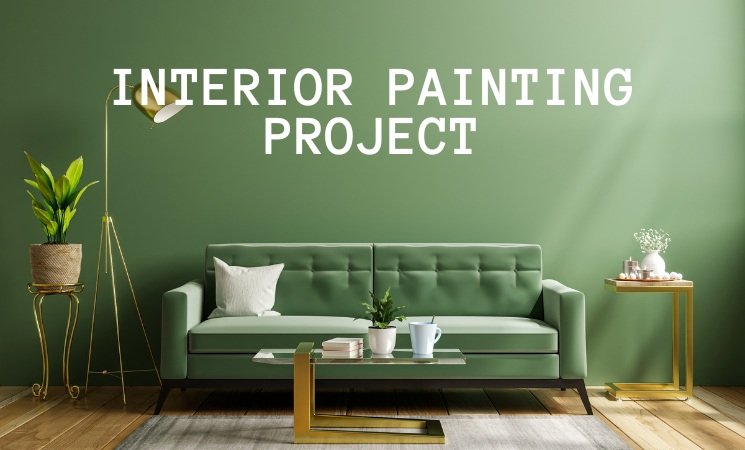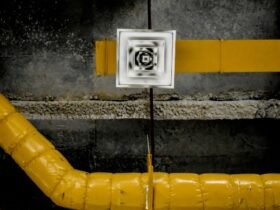Reinvigorating your living space with a fresh coat of paint can make a remarkable difference, but budgeting for an interior painting project is crucial to avoid unexpected expenses. By planning ahead and utilizing tools like an interior painting calculator, you can estimate costs more accurately.
Costs can escalate quickly if you’re not mindful. Factors such as the size of your home, paint quality, wall repairs, and labor costs must all be considered. This detailed guide will walk you through every step of the budgeting process, enabling you to achieve a beautifully painted interior without unnecessary stress or expense.
Assess the Scope of Your Project
Begin by pinpointing which rooms or areas need painting. This assessment should include measuring the square footage of each room and noting any perimeter trim or ceiling areas that require painting. Don’t forget to account for the condition of the walls, as extreme wear, stains, or holes may require repairs or additional preparation work, which can impact both time and costs. Get detailed with your list, including entryways, hallways, closets, and any accent walls that may require a different color or specialty finish.
A detailed assessment helps prevent “scope creep,” the process by which new needs emerge, increasing the overall project cost or timeline. According to Architectural Digest, understanding the cost to paint a house involves factoring in not just size but also labor, materials, and any necessary surface prep, all of which are easier to manage with a thorough initial evaluation.
Calculate Material Costs
Material costs make up a significant portion of your painting budget. Here’s what to consider:
- Paint: The average cost of quality interior paint is between $30 and $60 per gallon, and one gallon typically covers approximately 350 square feet. A 1,500-square-foot home typically requires 10–15 gallons.
- Primer: Don’t skip priming if your walls are stained, patched, or you’re making a bold color change. Primer usually costs $20–$40 per gallon.
- Painting Supplies: Brushes, rollers, tape, drop cloths, trays, and extension poles can add up quickly. Budget between $100 and $200 here; better tools can yield a better finish and faster work. According to NerdWallet, planning ahead and comparing prices on materials can significantly reduce your overall painting expenses.
Understand Labor Costs
The decision to hire professionals or do it yourself (DIY) will have a significant impact on your budget. On average, professional interior painters charge between $2 and $6 per square foot, which means that for a 1,500-square-foot home, labor costs can range from $3,000 to $9,000. This usually includes prep, minor repairs, and cleanup.
For a DIY project, you might save substantially, but it’s crucial to factor in the value of your time and the risk of errors—mishaps could mean paying for more paint or even hiring an expert to correct mistakes. Research reviews, request quotes, and verify references if you plan to hire someone to do the work.
Account for Additional Expenses
Some costs are easy to overlook but can add up quickly in any interior paint project:
- Wall and Drywall Repairs: Small holes or significant drywall issues require patching; these typically incur additional costs.
- Ceilings and Trim: Painting these usually adds costs per linear foot or per room.
- Furniture Moving: Some painters charge a fee to move furniture. You might save by doing this yourself if you’re able.
- Complex Features: Crown molding, wainscoting, decorative doorways, or built-ins may incur higher labor or material costs.
Be comprehensive in your initial walk-through to document everything that could require extra resources, whether in materials or labor.
Implement Cost-Saving Strategies
If you need to stretch your budget further, consider the following approaches:
- Buy Paint on Sale: Big-box retailers and local hardware stores often run sales—especially around holidays or at the end of the season. Stock up when discounts are available.
- Tackle Minor Prep Yourself: Save labor costs by moving furniture, taping, and cleaning walls yourself before the painters arrive.
- Choose Neutral Colors: These generally cover better in fewer coats, which means you’ll use less paint overall and keep costs down.
Remember—higher-quality paint may cost more initially, but it usually covers better and lasts longer, reducing the overall amount you need to buy and minimizing future repaints.
Set Aside a Contingency Fund
Unplanned expenses can occur during any home project. It’s prudent to allocate 10–20% of your overall budget as a contingency fund. This extra cushion ensures that if you encounter hidden wall problems, discover necessary repairs, or want to upgrade materials mid-project, you won’t be blindsided.
Track and Adjust Your Budget
Maintain a detailed log of every expense—from the initial paint swatches to the final touch-up kit. Regularly check your spending against your budget so you can catch overspending before it becomes problematic. Should certain areas start to creep over budget, identify where you can cut back or defer less critical upgrades until later.
Effective budget tracking translates to a smoother, less stressful painting experience, giving you the confidence to make informed decisions throughout your project.
Taking a calculated approach to your home’s interior painting project can help manage expectations, contain costs, and enable you to enjoy your newly refreshed living space with peace of mind.













